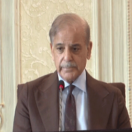By Shahid Iqbal
Published in Dawn on July 16, 2023
KARACHI: Pakistan suffered a massive $8.3 billion loss due to significant declines in remittances and exports during the outgoing fiscal year as the PMLN-led coalition government preferred appeasing the International Monetary Fund for a $1.2bn tranche.
Pakistan lost much more than what it gained from the IMF borrowings and inflows from other sources due to a lack of attention towards these two important inflows.
Pakistan has secured a nine-month $3bn loan programme for FY24 in return for a massive tax burden, unprecedented high-interest rate and record inflation and currency depreciation in FY23.
The remittances declined by 13.6pc to $27.024bn against $31.278bn in FY22, a loss of $4.252bn.
Interest-free inflows plummet as govt remains focused on IMF loan
The inflows from overseas Pakistanis fell even below the $29.449bn the country received in FY21 after surging by a record increase of $6.317bn over $23.132bn in FY20.
The trajectory of growth has been lost in FY23 despite over a million Pakistanis leaving the country for jobs mainly in the Middle East.
The inflows could be much higher due to the increased number of overseas Pakistani workers but they fell mainly due to the political and economic crisis which dominated the entire fiscal year creating uncertainties for all stakeholders including the overseas Pakistanis.
“Despite the month-to-month decline in the remittances, the government remained busy with the IMF for loans while it has been losing interest-free inflows without any strings. Attention was needed to address the declining trend but it looks borrowing was more important,” said Atif Ahmed, a currency dealer and expert in the interbank market.
At the same time, the exports started declining and finally ended with a decline of 12.7pc to $27.74bn compared to $31.78bn last year, a net loss of $4.04bn.
The twin declines resulted in a net cumulative loss of $8.294bn. The amount is almost equal to 30pc of the exports recorded in FY23.
The State Bank of Pakistan reported collective inflows of $4.2bn from IMF, Saudi Arabia and UAE this month. Pakistan hopes to get more borrowed dollars in the coming weeks and months after IMF’s support but the loss of $8.3bn is still higher.
This was the reason many analysts believe the IMF loan would no longer have a positive impact on the economy including the exchange rate.
“A fresh inflow of $4.2bn has significantly lifted sentiment. IMF’s programme was one of a kind, custom-made to fit Pakistan’s current needs and assisted with a political nudge to get this far. This shows how US and Gulf states consider Pakistan to be geopolitically too important and too big to fail,” said Faisal Mamsa, CEO of Tresmark and a financial expert.
“While the improved reserves are being cheered at, the backlog of payments (imports, profit repatriation, etc) estimated to be around $6bn, will not allow the rupee to strengthen above its current levels,” he said.
The dollar appreciated against PKR in the interbank market in the last session of Friday reflecting the fading impact of IMF’s support.
Mr Mamsa said if inflation stays elevated, interest rates may not go down any time soon. The IMF predicts 25pc inflation for FY24.





